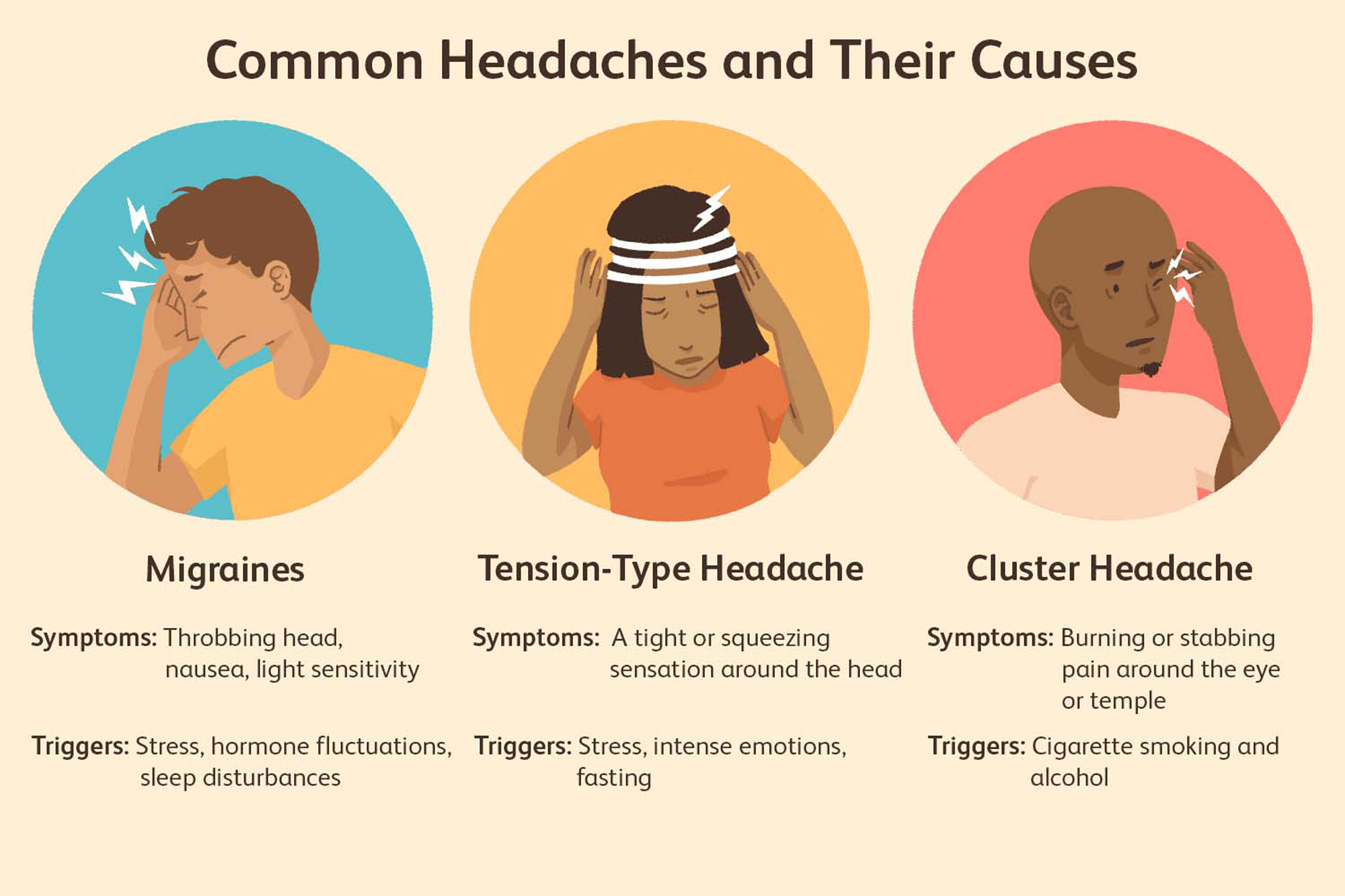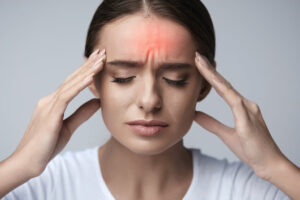Types of Headaches
Headaches are a very common condition that most people will experience many times during their lives. The main symptom of a headache is a pain in your head or face.
There are more than 150 types of headaches. They fall into two main categories:
primary and secondary headaches.
Primary headaches
Primary headaches are those that aren’t due to another medical condition. The category includes:
• Cluster headaches.
Cluster headaches are named such because they tend to recur over a period of several weeks. They usually present with pain limited to one side of the head, typically around one eye. In most cases, medication will need to be prescribed to manage the condition and make symptoms more bearable.
• Migraine.
Migraines are less common than tension headaches but are widely considered to be much more severe in both symptoms and duration, lasting up to multiple days at a time with little to no relief. While they are not as well understood as other types of headaches, there are a number of triggers that can lead to an episode, such as stress or missing meals.
• Tension headaches.
Tension headaches affect approximately 3 out of 4 people at some point in their lives and can be brought on by a number of different reasons. Often, they result following emotional distress, stress or strong emotional distraught, or general tension in the neck and shoulders.
Secondary headaches
Secondary headaches are related to another medical condition, such as:
• Hypnic Headache
A hypnic headache is a rare condition that usually begins when people are in their 50s, but it can start sooner. People also refer to them as “alarm clock” headaches, and they wake individuals during the night. A hypnic headache consists of mild-to-moderate throbbing pain, usually in both sides of the head. It can last for up to 3 hours, while other symptoms may include nausea and sensitivity to light and sound.
• Head injury.
Post-traumatic headaches can develop after any type of head injury. These headaches feel like migraine or tension headaches. They usually last up to 6 to 12 months after your injury occurs. They can become chronic.
• High blood pressure (hypertension).
High blood pressure can cause a headache. This kind of headache signals an emergency. It occurs when your blood pressure becomes dangerously high. A hypertension headache will usually occur on both sides of your head and is typically worse with any activity. It often has a pulsating quality.
• Rebound headaches
Rebound headaches, also known as medication overuse headaches, can feel like a dull, tension-type headache, or they may feel more intensely painful, like a migraine headache. You may be more susceptible to this type of headache if you frequently use over-the-counter (OTC) pain relievers. Overuse of these medications leads to more headaches, rather than fewer.
• Sinus congestion.
Sinus headaches occur when pressure in the sinuses of the head build-up in conjunction with severe congestion. Often, this will occur seasonally as allergies are in full swing. Often, they will present with pain in the front of the head as well as potential earaches.
• Exertional Headaches
Intense physical activity such as running, jumping, heavy weight lifting n may cause exertional headaches. Often, these types of headaches result from a build-up in pressure that occurs while performing activity, causing a strain on the body as a whole but especially the head.
If your headache symptoms get worse or happen more often despite treatment, ask your doctor to refer you to a headache specialist.
Once you get your headaches diagnosed correctly, you can start the right treatment plan for your symptoms.



